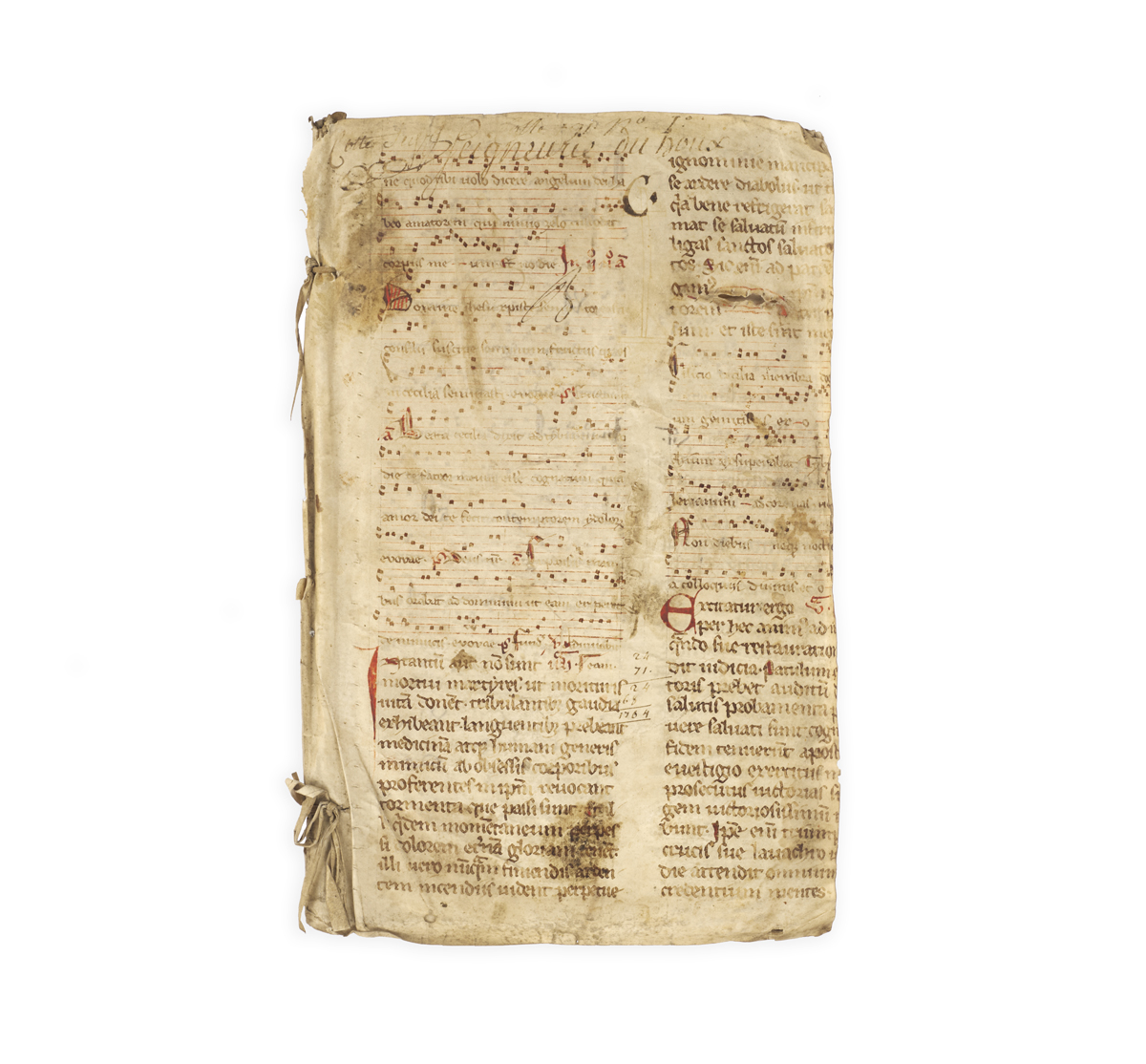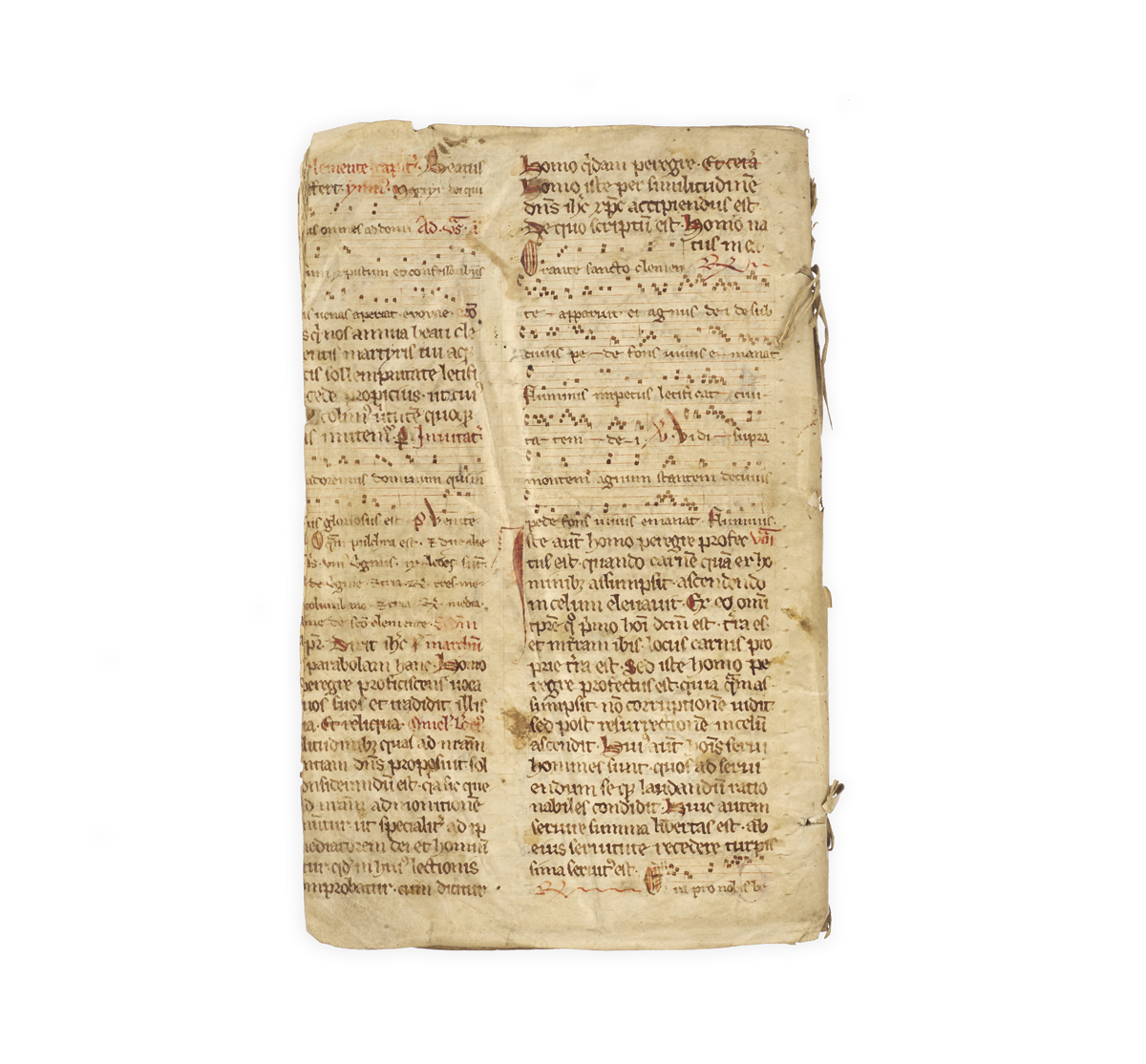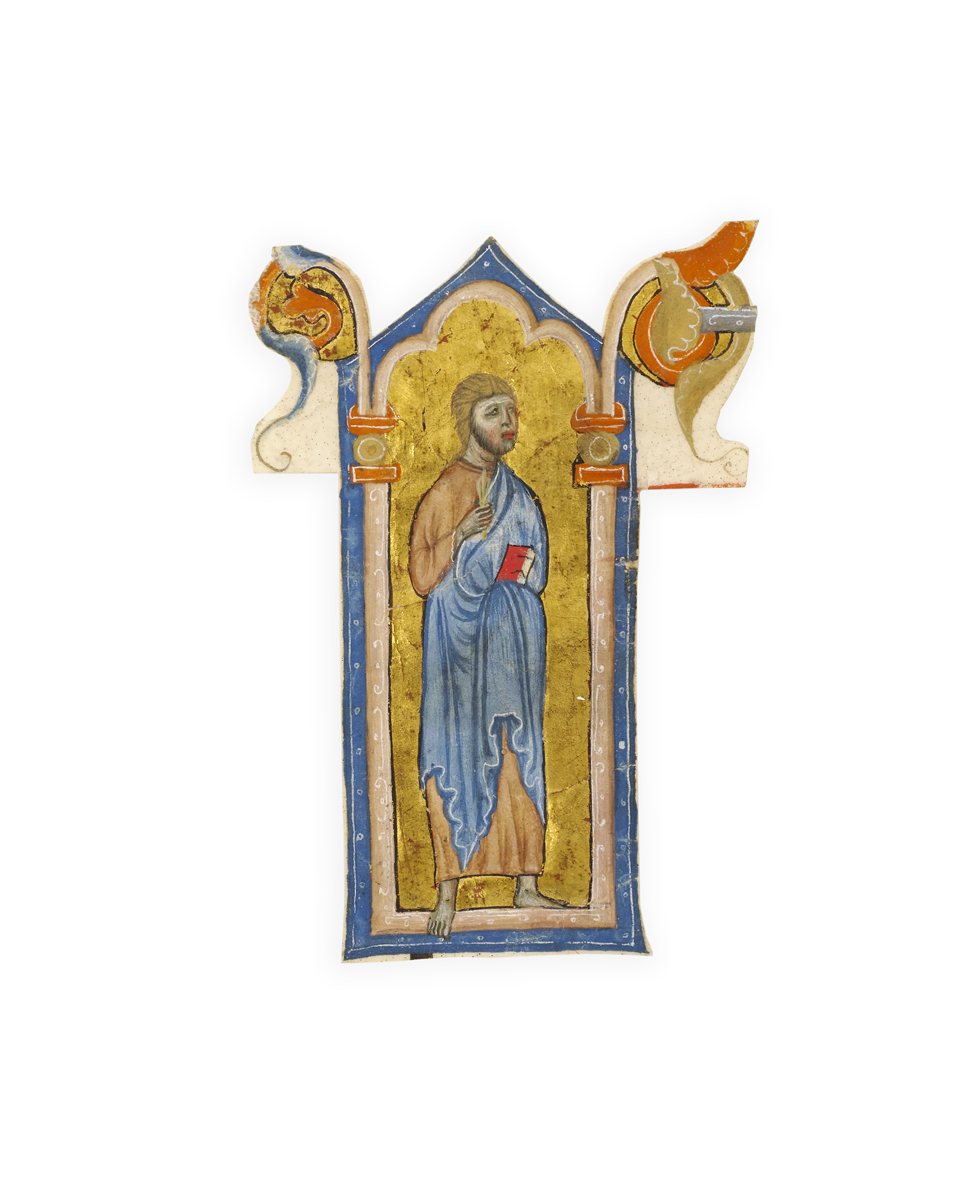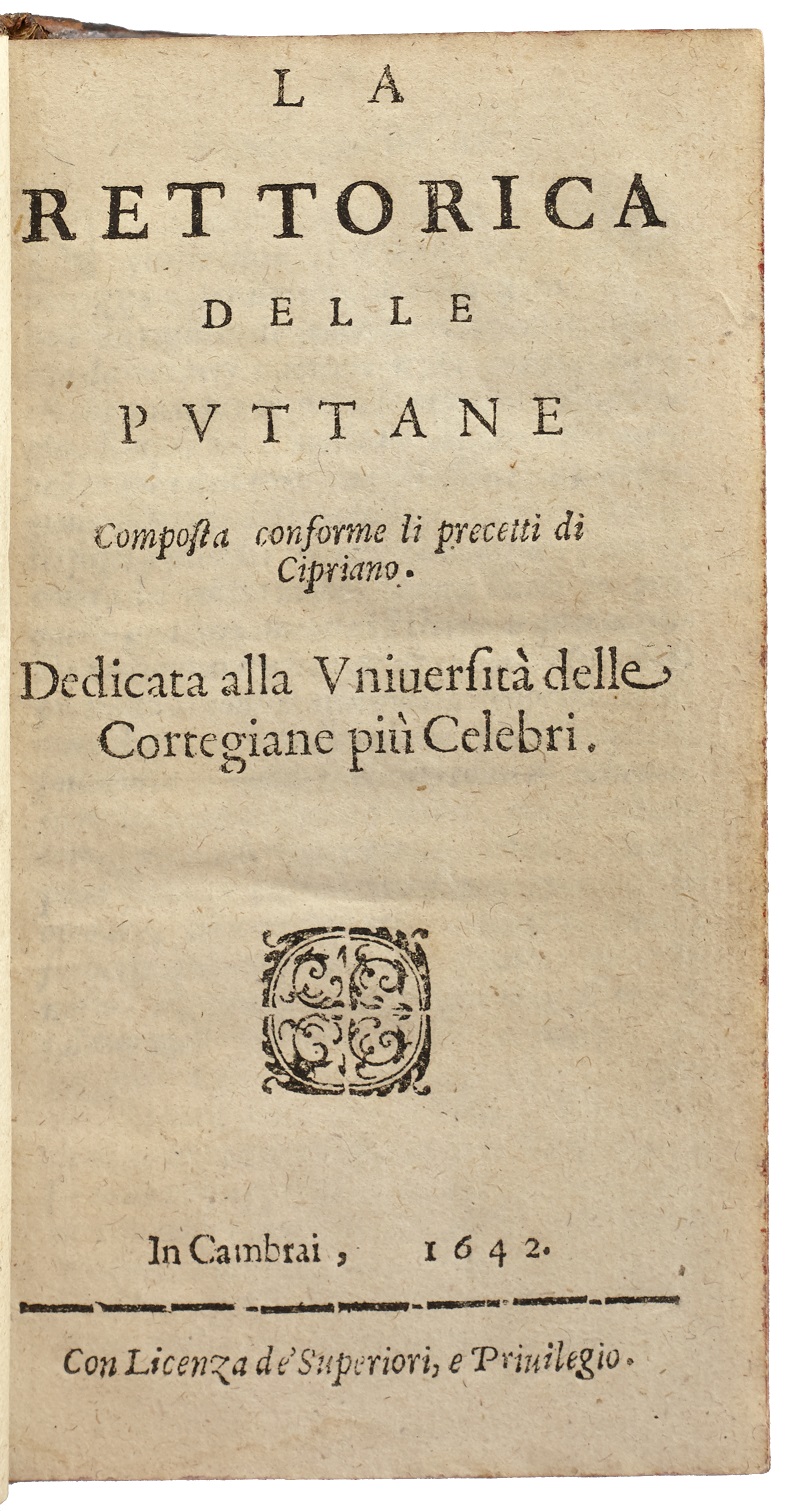


‘THE SUPPLIANT WIDOW FEAR OPPRESSION'
DE CICON, Marguerite.
Manuscript regarding the seigneurial rights of Marguerite de Cicon.
Montureux-lès-Baulay, France, 1627.
Manuscript on paper (watermark of open hand and trefoil), folio (282 x 184 mm), ff. [1 (blank)], [69], [2 (blank)]; very neatly written in French in brown ink in a single hand, up to 40 lines per page; a few light marks, but very well preserved; bound in parchment wrappers formed from part of a bifolium from a fourteenth-century liturgical manuscript with music, attached to the text block with two parchment tackets knotted at the spine; a few small holes, a little rubbed and stained; ‘Seigneurie du Houx’ written in ink at head of upper cover.

Added to your basket:
Manuscript regarding the seigneurial rights of Marguerite de Cicon.
A remarkably detailed manuscript, and a very attractive object, detailing the seigneurial rights of Marguerite de Cicon in the small town of Montureux-lès-Baulay, situated between Nancy and Dijon in the Burgundy region of eastern France.
As Seigneur de Montureux, Marguerite’s husband François de Saint Martin shared various manorial privileges with Jean Claude du Houx and his wife Barbe de Charmoille. Upon François’s death, these rights came to Marguerite as his widow and as the mother of their children Claude François and Jean Philibert. Fearing that they might be challenged or neglected, however – and fear is the word employed here in the phrase ‘laditte Vefue suppliante crainct oppression’ (f.4r) – Marguerite called upon the services of Guillaume Estiennet of nearby Jussey, notary general of Burgundy, to draw up this document laying out her rights.
The document opens by detailing ancient privileges enjoyed by the lords of Montureux, with accompanying remarks by the local inhabitants agreeing or disagreeing with them. So, for example, newly married couples were to give the lords a pint of wine and a loaf of white bread on their wedding day, villagers were to seek permission to hold assemblies, and were to appear before their lords in armour as required – customs which are rigorously challenged by the locals here. Other rights discussed relate to fines, bread and pastries cooked in the village oven and at home, harvests, wine making, and pasturage.
In the pages that follow, almost fifty local inhabitants detail their property and land holdings – including vineyards and portions of the river Sâone – and recognise the rights of de Cicon and du Houx. Several women feature (e.g. Anne Boillot, Anne Liffot, Françoise Roche), numerous members of the well-off Billeret family, and the local baker Jacques Curie (‘auquel fourg nous avons le droict at autorite de cuire et faire cuire aguantes foyes quil nous plaict nos pains et pastes’, f. 48v). Details of rents follow, and of properties divided between de Cicon and du Houx.
Binding: bound in part of a bifolium from an antiphoner of the first half of the fourteenth century, in double columns, with musical notation on four-line red staves, and decorative initials in red and brown, bearing text and music for the feasts of St Cecilia (22 November) and St Clement (23 November).

